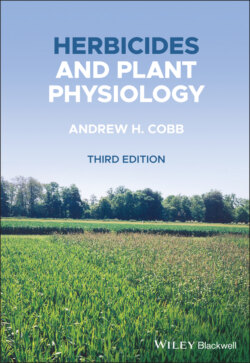Читать книгу Herbicides and Plant Physiology - Andrew H. Cobb - Страница 19
1.4.3 Reduction in crop quality
ОглавлениеCompetition between crop and weed species can result in spindly leaf crops and deformed root crops which are less attractive to consumers and processors. A crop may have to be rejected if it contains weed seeds, especially when the crop is grown for seed, such as barley and wheat, and if the weed seeds are similar in size and shape to the crop, e.g. wild oats (Avena fatua) in cereal crops. Similar problems are encountered in the contamination of oilseed rape seed with seeds of weed species such as cleavers (Galium aparine). Where a proportion of the seed is saved for planting in subsequent seasons, this can cause a large increase in weed infestation. Contamination by poisonous seeds, such as darnel (Lolium temulentum) and corncockle (Agrostemma githago) in flour‐forming cereals is also unacceptable and once led to vastly increased costs of crop cleaning. Such cleaning, however, has meant that these weeds are now probably extinct in agroecosystems in the UK. A further example that still causes major problems is black nightshade fruit (Solanum nigrum) in pea crops (Hill, 1977). In this case, the poisonous weed berry is of similar size and shape to the crop and so must be eradicated. Although grazing animals avoid poisonous species in pasture (e.g. common ragwort, Senecio jacobea), they may be difficult to avoid in hay and silage, and some species, notably the wild onion (Allium vineale), can cause unacceptable flavours in milk and meat.
